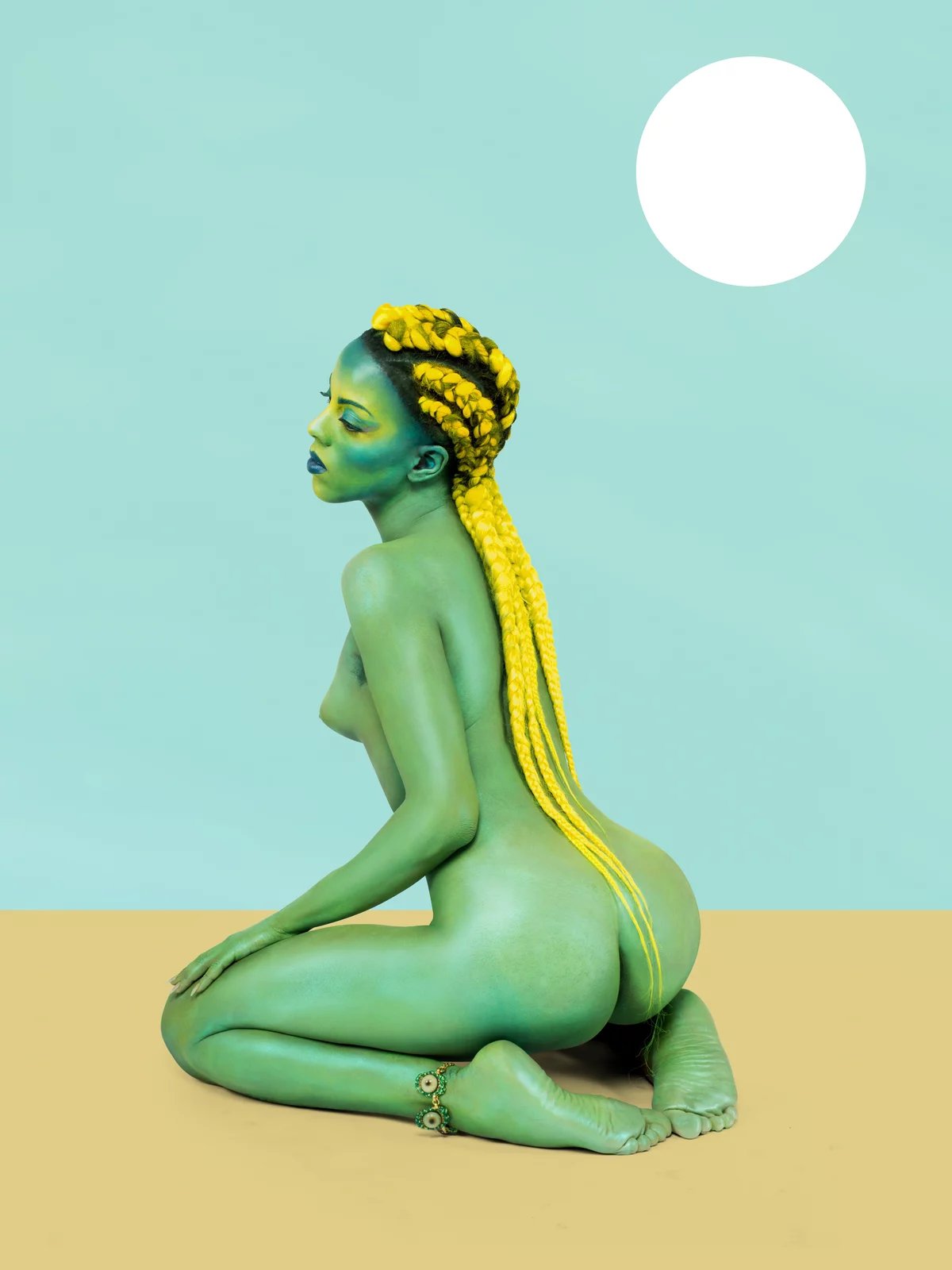NONA FAUSTINE AND JULIANA HUXTABLE
Nona Faustine, from the White Shoes series. They Tagged the Land with Trophies and Institutions from Their Rapes and Conquests, Tweed Courthouse, NYC, 2013. Courtesy of the artist and Higher Pictures. © Nona Faustine
Afterimage(s) by Lisa Bernhoft-Sjødin:
I had a lot of options in my head, there's so much good stuff out there that I think about a lot. One of the first images that came to mind was from Nona Faustine's White Shoes series. I saw the series in New York at Easter and the artist took pictures, in different versions of nudity and with white shoes, of different places in New York City where there was a slave trade or places where black people were not allowed to be.
There's a particular image in that series where you see Faustine pushing a column, completely naked, in these white shoes, you can see that she's exerting herself, that it's exhausting. I've been thinking a lot about this exhibition, and I thought that's something I should continue to think about, in relation to who I am and where I'm going. And in relation to the issues that are going on in the world. It visualizes what these people have experienced in the generations before us.
Juliana Huxtable, Untitled in the Rage (Nibiru Cataclysm), 2015
And I realized that I'm really interested in that, and what it's like to cross boundaries between what's human and what's not, and then become a hybrid or a myth, and then I came to a work that I keep coming back to, by Juliana Huxtable. I love everything she does, but there's one self-portrait in particular that I saw during the triennial at the New Museum in 2015. Untitled in the Rage, Nibiru Cataclysm shows the artist sitting with a background of clouds, and behind her you can see a planet that looks like a moon. Her body is green and her hair is yellow. I feel that there are three things that this painting represents to me.
First, it's what the Nibiru cataclysm means, the myth of a ninth planet in the solar system that threatens to crash into the Earth and destroy everything. Which Huxtable then mythologizes as this cataclysm that comes and blows up everything about identity, trans identity and feminism. And about freedom and unfreedom within that theme. The second is how the portrait circumvents what a self-portrait is. The image has so much to say about who Huxtable is, the image for me has an effect where it breaks absolutely all boundaries of what it means to identify as something.
The last part is about how you think about where you're going in terms of feminism and identity politics. Because what's interesting about Huxtable-and this particular portrait-is that it points to a place where we're going in terms of identity politics and feminism in the future. We often talk about what's happening now and what's happened. What we want to fight against and what we can achieve in the future. And if you drag the past into the future, you're kind of stuck, you're so quickly influenced by the past that the future becomes impossible to imagine. That's where Huxtable comes in as Cataclysm and helps with that. Her starting point is what she wants the future to look like. And that's why that image stuck with me, because it felt completely eye-opening.
Afterimage is an ekphrastic series about that one image you see when you close your eyes, the one still lingering in your mind. We invite artists and writers to reflect on an image they can't shake. This column has been a part of Objektiv since our very first issue, originally titled Sinnbilde in Norwegian. As the sea of images continues to swell, the series explores which visuals linger and take root in today's endless stream - much like a song that plays on repeat in your head. Whether it's an image glimpsed on a billboard, a portrait in a newspaper, a family photo from an album or an Instagram reel, we're interested in those fleeting moments that stay with you and refuse to let go.

